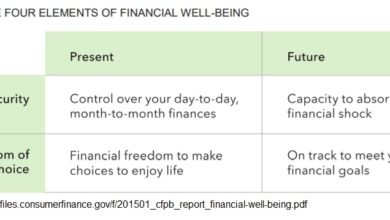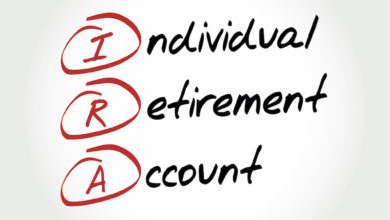Life Changing Investment Strategies for a Happy & Wealthy Retirement

Are you prepared for your golden years? Planning for retirement is essential to ensure a comfortable and secure future. With an extensive range of retirement accounts and investment options, The Institute of Financial Wellness is here to help you navigate the path to a happy and wealthy retirement. Through strategic planning, diversification, and tax advantages, these life-changing investment strategies can help you maximize your retirement savings and achieve your financial goals.
In this blog post, we’ll explore various Retirement Plans, mutual funds, and investment strategies, as well as the importance of diversifying your retirement portfolio and seeking professional advice. Together, these insights will provide you with a comprehensive understanding of how to create a personalized retirement plan that suits your individual needs and goals.
Quick Summary
- Understand Retirement Plans for a secure financial future.
- Invest in mutual funds, ETFs, and bond funds to diversify your portfolio and maximize returns.
- Take advantage of employer benefits and seek professional advice to create an optimal retirement plan.
Understanding Retirement Plans

Planning and saving for retirement is more important than ever, as life expectancies are increasing, and retirement can span up to 40 years. By planning a prudential retirement, you can discuss a variety of plans to choose the one that works best for you and to ensure a positive financial future. These plans can help you make the most of your savings by allowing you to invest on a tax-deferred basis, such as 401(k), 403(b), and pension plans. Additionally, Roth 401(k) plans allow you to contribute after-tax dollars while consolidating all of your retirement funds into one retirement account, simplifies tracking retirement expenses, and avoids capital gains taxes.
To make the most of your retirement savings, it’s essential to include them as part of your budget and start early to benefit from compound interest. Some tips for maximizing your savings include:
- Diversifying your investments through equity funds rather than single-stock or sector-specific options.
- Setting up automatic transfers between a checking and retirement account to ensure regular savings.
- Aiming to be debt-free by age 65 as a good goal to work towards. (You can use a savings goal calculator)
401(k) Plans
A 401(k) plan is an employer-sponsored retirement savings account that offers the following benefits:
- Allows employees to contribute pre-tax dollars
- Potential employer matching contributions
- Offers an immediate salary increase through employer matching
- Can lead to increased returns over time due to compound interest
- Contribution limit established by the federal government, usually increased annually.
Contributing to a 401(k) plan offers several benefits.
- You can save pre-tax dollars, thus not incurring income taxes on the funds set aside.
- However, taxes will be due upon withdrawal of the money.
- To enroll in a 401(k) plan, employees must complete a form indicating their desired percentage of paycheck contribution.
- Automation in 401(k) plans can facilitate an increase in an employee’s savings rate annually.
403(b) Plans
A 403(b) plan is a retirement savings plan similar to a 401(k) but tailored for employees of nonprofit organizations, public schools, and certain religious institutions. While 403(b) plans can be an effective tool for savings, it’s essential to be aware of their potential drawbacks and associated fees.
However, one of the main disadvantages of a 403(b) plan is its complexity and cost. You may be prompted to invest in an annuity rather than a mutual fund, which is commonly found in 401(k) plans. Annuities often have significantly high fees, so it’s crucial to weigh the benefits and drawbacks before choosing this option.
Pension Plans
What about pension plans? These, including simplified employee pension plans, are employer-funded retirement plans that provide a guaranteed income stream to retirees based on their years of service and salary history. There are two primary types of pension plans: defined benefit plans and defined contribution plans. These plans offer a secure income stream to retirees, ensuring financial stability during their golden years.
However, it’s important to note that not all employers offer pension plans, and some may only provide a defined contribution plan, like a 401(k) or 403(b). In such cases, individuals must take responsibility for their savings and investments to secure a comfortable retirement.
Investing in Mutual Funds

There’s a variety of mutual fund options for retirement investing, such as actively managed funds, index funds, and target-date funds. Investing in mutual funds can offer several advantages, including diversification, professional management, and the potential for higher returns. However, there are also risks associated with investing in mutual funds, such as market risk, liquidity risk, and management risk.
By understanding these different types of mutual funds and their unique features, you can make informed decisions about which options best suit your retirement investment strategy. In the following sections, we’ll delve deeper into the characteristics, benefits, and potential drawbacks of actively managed funds, index funds, and target-date funds, and you can also consult with a retirement coaching specialist to help you decide what works best for you.
Actively Managed Funds
Actively managed funds are investment funds where a professional fund manager or team of managers make decisions on which securities to buy and sell in order to generate a higher return than the market. These funds are suitable for individuals who prefer to entrust their investments to a professional fund manager.
However, the primary disadvantages of actively managed mutual funds include increased fees and reduced flexibility. As an investor, you will incur higher fees due to the stock selection being carried out by someone else. Additionally, you are unable to purchase or sell these funds during the day as they are only priced after the market closes.
Despite these drawbacks, actively managed funds can potentially result in higher returns than other investment vehicles, thanks to the expertise of experienced fund managers.
Index Funds
Index funds are a type of mutual fund that seeks to replicate the performance of a specified market index, such as the S&P 500, by investing in all the securities that make up that index without a fund manager actively selecting stocks. This approach offers consistent returns and generally has lower fees than traditional mutual funds.
Index funds provide the opportunity to capture all returns in a given market, such as large-cap US stocks or bonds from emerging markets. In addition, they have the benefit of lower costs and are more accessible than actively managed funds.
The purpose of index funds is to avoid underperformance and to ensure returns that are equivalent to the index they track.
Target-Date Funds
Target-date funds are a type of investment fund that adjusts its asset allocation based on an investor’s target retirement date. They are structured to become more conservative as the target date approaches and typically comprise various stocks, bonds, and other investments to assist investors in preparing for retirement.
The advantages of target-date funds include a convenient way to preserve an appropriate asset allocation, diversification, and the potential for higher returns in the long run. However, it is essential to understand the potential risks associated with target-date funds before investing. These risks may include not performing as expected due to changes in the markets or other factors, as well as not being suitable for all investors.
Diversifying Your Retirement Investment Portfolio

Diversifying your retirement portfolio is crucial to reduce risk and increase potential returns. By investing in various asset classes, ETFs, and bond funds, you can create a well-balanced investment portfolio that aligns with your individual goals and risk tolerance.
In the following sections, we’ll explore different options for diversifying your retirement portfolio, including asset classes, exchange-traded funds, and bond funds. By understanding these various investment options, you can make informed decisions about how to best allocate your savings and maximize your potential returns.
Asset Classes
Asset classes refer to collections of investments that share common characteristics, such as:
- Equities (stocks)
- Fixed income (bonds)
- Cash equivalents
- Real estate
- Commodities
- Alternative investments
Did you know that each asset class offers different levels of risk and return potential? Generally, stocks offer the highest potential for return but also the highest risk, while bonds and cash equivalents tend to have a lower potential for return but also lower risk.
Exchange-Traded Funds (ETFs)
Exchange-traded funds (ETFs) are investment funds that offer a low-cost solution for diversifying portfolios, providing trading flexibility, transparency, and tax efficiency. They provide:
- Diversification and reduced costs compared to traditional mutual funds
- Trading convenience
- Transparency
- Tax efficiency
However, ETFs may demonstrate greater volatility than traditional mutual funds, and associated trading costs may be higher.
Bond Funds
Bond funds are a type of investment vehicle that invests primarily in bonds and other fixed-income securities, such bond mutual funds such as:
- Government bonds
- Municipal bonds
- Corporate bonds
- Convertible bonds
Investing in bond funds offers a steady source of income and can be used to diversify a retirement portfolio. They are typically less volatile than stocks, making them an excellent option for those who prefer to be conservative in their investments.
However, investing in bond funds carries the risk that the value of the bonds in the fund may fluctuate with changes in interest rates, and there is a possibility of credit risk.
Tax Advantages of Retirement Accounts

Retirement accounts offer tax advantages that can help you maximize your retirement savings. These tax advantages include tax-deferred growth, allowing you to defer taxation on the funds in your account until withdrawal during retirement.
Additionally, tax-deductible contributions can reduce your taxable income and enable you to save more for retirement while lowering your current tax liability. By utilizing these tax advantages and investing in retirement accounts, you can optimize your savings and investment strategies, ensuring a more comfortable and secure future with retirement money and stopping living from paycheck to paycheck.
Tax-Deferred Growth
Tax-deferred growth allows investments to grow without being taxed until withdrawals are made during retirement, potentially less interest rate risk resulting in higher returns. By investing in tax-deferred accounts, such as 401(k)s, 403(b)s, and pension plans, you can leverage tax-deferred growth to maximize your savings.
However, one risk associated with tax-deferred growth is that taxes will be due on the money when it is withdrawn, potentially at a higher rate than when it was initially invested, affecting the cash flow.
Tax Deductible Contributions
Tax-deductible contributions refer to donations made to qualified organizations that can be deducted from your taxable income up to a certain limit. By making tax-deductible contributions, you can decrease your taxable income, pay tax less, reduce your current tax obligation, and save more for retirement.
Be aware that the Internal Revenue Service (IRS) limits the amount of tax-deductible contributions that can be made, generally capping the deduction at 50% of your adjusted gross income. As you pay taxes, it’s important to understand these tax deduction limitations.
Maximizing Employer Benefits

Taking advantage of your employer sponsored retirement plans and benefits is essential for making the most of your retirement savings. By utilizing matching contributions, observing vesting schedules, and taking advantage of other retirement plan features provided by your employer, you can maximize your savings and secure a comfortable future.
Consulting a financial advisor when considering employer benefits can help you gain a better understanding of your options and make informed decisions tailored to the tax consequences of your individual situation. By maximizing your employer benefits, you can reduce your tax obligation, bolster your savings, and access additional benefits like health insurance and paid time off.
Retirement Planning for Self-Employed Individuals

When it comes to retirement planning, self-employed individuals and small business owners need to take a proactive approach. With various retirement accounts available, such as:
- Traditional and Roth IRAs
- SEP IRAs
- SIMPLE IRAs
- One-participant 401(k)s
It’s essential to choose the most suitable plan based on your individual circumstances and requirements.
To make the most of your savings, it’s important to consider the following:
- Your financial objectives
- Collaborating with a partner if applicable
- Requesting a comprehensive fee table from the financial institution to compare fees
By understanding your options and choosing the right retirement account, you can secure a comfortable and financially stable future as a self-employed individual.
Defined Contribution Plans vs. Guaranteed Income Options

As you plan for your retirement, it’s important to compare defined contribution plans, like 401(k)s and IRAs, with guaranteed income options, such as annuities. Defined contribution plans are retirement savings accounts where both the individual and their employer make contributions. The individual has to manage and invest the funds on their own. On the other hand, annuities are financial products that guarantee an income in retirement.
By comparing these options, you can determine the best retirement investment strategy based on your individual needs and goals. While defined contribution plans offer flexibility and the potential for higher returns, annuities provide a guaranteed income stream that can be augmented by market returns. Considering your financial objectives and risk tolerance will help you make an informed decision regarding your retirement investments. The more you know, the more prepared you will be when you retire.
Seeking Professional Advice

Seeking professional advice from a financial advisor or utilizing robo-advisory services can help you make informed decisions about your retirement investments and create a personalized plan for a successful retirement. Financial advisors can provide guidance on diversifying your retirement portfolio, maximizing employer benefits, and choosing the right retirement accounts for your individual needs.
Robo-advisors are companies that provide a service to assist individuals in making informed decisions regarding their retirement investments and developing a personalized plan for a successful retirement. By seeking professional advice and leveraging the expertise of financial advisors or robo-advisory services, you can ensure that your retirement investment strategy is tailored to your unique needs and goals.
Full Summary
Planning for a happy and wealthy retirement is essential in today’s world. With various retirement plans, mutual fund options, and investment strategies available, you can create a personalized plan that aligns with your individual needs and goals. By diversifying your retirement portfolio, maximizing employer benefits, seeking professional advice, and considering the various tax benefits and advantages offered by retirement accounts, you can optimize your savings and secure a comfortable future.
Remember, the key to a successful retirement is proactive planning and informed decision-making. Start early, stay consistent, and be prepared to adapt your retirement income strategy as your needs and goals evolve over time. Your golden years await!
At the Institute of Financial Wellness, we believe that everyone deserves to live their best life, and we’re committed to helping you achieve your financial goals. Whether you’re planning for retirement or looking to manage your finances more effectively, we offer a comprehensive range of resources, services, and educational materials to help you on your journey to financial success.
With our FREE Custom Retirement Roadmap, you can gain valuable insights into how to increase the probability of your retirement success, lower or eliminate taxes, generate income while in retirement, and mitigate the effects of market volatility. So why wait? Request your roadmap today and take the first step towards achieving your financial goals.
Frequently Asked Questions
What is the best investment strategy for retirees?
Retirees should take advantage of tax-advantaged retirement accounts, such as 401ks, IRAs, and Roth IRAs, to maximize their retirement savings and benefit from tax-deferred or tax-free growth. These accounts can help retirees save more money for retirement and reduce their tax burden. They also provide a variety of investment options, allowing retirees to diversify their portfolios and reduce their risk. Retirees should consult with a financial advisor to determine which type of retirement account is best for their individual situation.
What are the main differences between a 401(k) and a 403(b) plan?
A 401(k) plan is typically offered by for-profit companies, while a 403(b) plan is designed for employees of nonprofit organizations, public schools, and certain religious institutions. Be sure to speak with a financial advisor to learn more and discuss your options.
Erik C. Sussman, CLU®, ChFC®, CFP®, and CEO of The Institute of Financial Wellness founded the company to provide financial education, resources, and services that help people live their best lives.
For Financial Professionals:
The Institute of Financial Wellness provides proven sales and marketing systems, state-of-the-art technology, training, and support to financial professionals nationwide. The IFW helps financial professionals grow their practices to the next level! IFW Certified Financial Professionals are an elite group of professionals that, together with the IFW, help people succeed financially and live their best lives.
For Consumers:
The Institute of Financial Wellness is the most comprehensive multi-media network for financial education, resources, and services. In fulfilling our mission to help people “Get There” and live their best life, we deliver the following five unique value propositions:
Our philosophy is that when it comes to financial decisions, Never say Never. Never say Always. It Depends!






